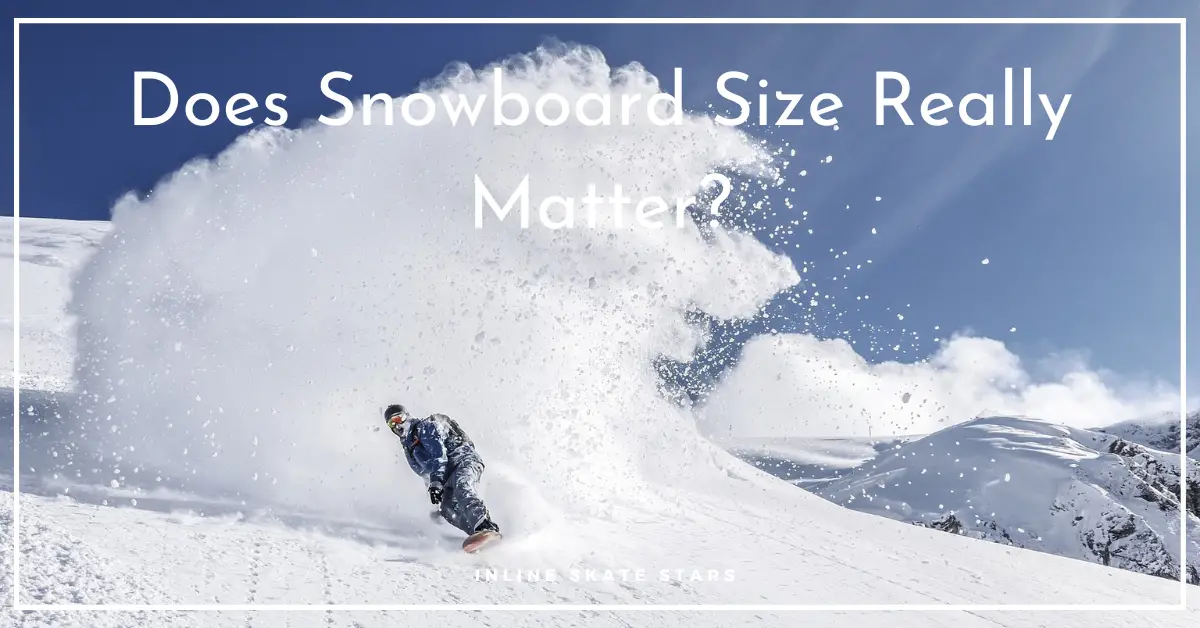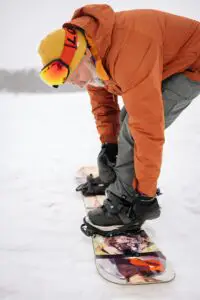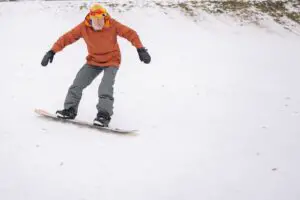A snowboard that fits your needs is the key to maximizing your slope experience and having fun on the slope.
When it comes to snowboarding, your snowboard is your number one significant piece of equipment.
A snowboard’s shape and size affect how it works. The proper size will make your snowboard performance more effortless and enjoyable, whether you are an advanced or novice rider.
There are factors to consider when purchasing a snowboard. Your weight will heavily influence your choice of the right board.
A long snowboard is best for a heavier rider, while a short snowboard is best for a lighter rider.
Other factors to consider for your snowboard size are your height, riding skill level, riding terrain, and riding style. That is just a scratch on the surface.
I cover details in the rest of this guide!
Does Snowboard Size Really Matter?
Does snowboard size really matter? The size of your snowboard matters.
Although there is no right or wrong size, choosing the appropriate one will give you more control over your board.
Additionally, the right size will improve your slope experience and snowboarding performance.
How To Select The Right Snowboards
1. Weight
When it comes to choosing the best and right snowboard for yourself, consider your body mass index. Being a snowboarder is not affected by weight, but it does require excellent balance.
A long snowboard is ideal for a heavy rider. You will be able to control it easily and comfortably.
If you are a heavy rider and choose a short snowboard, you will lose control of the board, particularly at high speeds.
A lighter snowboarder will choose a shorter board that is easier to control when flexing and spinning the board to suit your movements.
2. Height
Your height influences the type of snowboard you need, but not as much as your weight. A taller rider would prefer a longer snowboard. A long snowboard provides more surface area.
As a rule of thumb, your board’s nose should be about halfway between your chin and nose.
Practice this by standing upright on an even surface. Place your board vertically against your body to get the right snowboard size. Your toes should be parallel to the board’s tail.
3. Proficiency Level
A beginner snowboarder will require a shorter snowboard that is more comfortable for their ability level. A shorter snowboard board is more responsive and forgiving of errors, making it suitable for beginners.
Intermediate riders who aren’t sure of their preferred riding style can also use a short snowboard.
Advanced snowboarders can choose a longer board. They are skilled at managing the snowboards on the hill. This will also rely on individual preference.
4. Riding Style
Your riding style determines the size of your snowboard. If you ride fast and aggressively, you should get a long snowboard. Long snowboards provide good stability when riding fast, especially when skiing downhill.
A free or all-mountain ride will require you to have a long snowboard.
The riding styles involve aggressive and high-speed rides. A longer snowboard will help avoid coming off your board at high speed.
Short snowboards are recommended for riders that love making jumps and tricks.
Some riding styles that require short snowboards include freestyle, jibbing, and alpine. A short snowboard is easier to control and turn than a long snowboard.
5. Riding Terrain
Your choice of terrain and snow conditions will matter when selecting a snowboard.
All-mountain, powder, splitboards, freeride, and freestyle snowboards are different types. Riding terrain includes park, pipe, powder, backcountry, and groomed runs.
A short snowboard is good for park and pipe. The terrain has features such as jibs and jumps for riders who enjoy jibbing and freeriding styles.
A short snowboard increases your maneuverability and provides easy, smooth spins and jumps.
For the harshest conditions, such as backcountry, groomed runs, and powder, go for a longer board.
In such conditions, a longer board will offer good flotation on powder and be stable enough for high speed.
How to Choose Your Snowboard
Snowboarding, like skateboarding, necessitates a board tailored to your riding preferences.
As a result, understanding the mechanism of the board allows you to select the appropriate board size.
Therefore, your snowboard size should take into account the following factors:
1. Length
The length of your board is determined by your weight and height, as well as your snowboarding style.
Many board manufacturers, however, recommend that you choose the length of your board based on your weight.
Snowboarding requires, at most, an even distribution of your weight throughout your snowboard base.
Weight, therefore, is a significant determinant of your speed, stability, and floatation on the powder.
A longer snowboard will fit you perfectly if your rides are fast and aggressive.
Longer snowboards provide stability at high speeds and offer a good grip on the snow. They are especially important when descending the slopes.
A shorter board is ideal for simple maneuvers if you like to jump and twist. A short snowboard makes it easier to manage, turn, and spin your board.
This will also come down to personal preference; you can always go with your taste if you don’t want to consider the board’s length.
2. Width
When looking for the perfect and right-fitting snowboard, width is one factor that is frequently overlooked.
Choosing a fit width minimizes heel overhang and toe or heel non-resistance pull. A snowboard’s width is measured around the center of the board.
Another factor to consider when deciding on the width of your snowboard is the size of your boots.
To get the right snowboard size, measure your board width while wearing your snowboard boots.
Your toes or heels should not overhang so much that they drag on the snow when making turns.
The Pros of a Wide Snowboard
Wide snowboards have unique characteristics that set them apart from regular snowboards. Some wide snowboard pros include;
Fewer Chances of Boot Overhung
Boot overhang occurs when your toe or heel end is slightly over the width of your snowboard.
When you have an overhang, your toes and heels keep dragging in the snow.
A wider board means fewer chances of such an experience. A broad board can accommodate even large feet.
Difficult to Boot Out
In snowboarding, “boot out” is when you lose your edge hold when your boot makes contact with the snow.
Wider snowboards accommodate larger boots and are less likely to boot out on you.
As a result, your safety in the snow and your slope experience will improve.
Offers Great Float and Speed
Wider boards are aggressive in large piles of snow anywhere on the mountain.
The board effortlessly floats on such snow, providing even better gliding through fresh snow.
When compared to regular snowboards, wider boards are faster. Their speed is always fast in any terrain.
They Are More Stable
Wider snowboards provide excellent stability, making it difficult to fall off, especially when performing tricks like indy grab, ollie, or nollie.
The board stability facilitates trick performance and is safer because it is more difficult to fall off a wider snowboard.
The Cons of a Wide Snowboard
Wider snowboards can also influence your snowboarding experience. Below is how it works;
Heavy In Weight
The main drawback of wider snowboards is their weight, which may not be suitable for small feet.
For riders with small feet, the heavy board is difficult to control. The heavier the board, the more complex the maneuver.
Cramps Possibility
Controlling a heavier, wider board is difficult. You must engage your muscles heavily.
When you extensively strain your muscles, you experience cramps and pain in your feet and calves.
Challenge to Perform Turns
Turning is difficult due to the weight of a wider board, especially for those with smaller feet.
The large surface area of the board makes turning difficult, resulting in less control over your board.
Does Snowboard Size Really Matter? | Conclusion
Does snowboard size really matter? Snowboard size is necessary when it comes to selecting your board. The size includes both the length and the width of the snowboard.
Short snowboards are best for making jumps and turns and are easier to maneuver.
On the other hand, a longer snowboard is suitable for aggressive and fast rides.
Furthermore, heavy snowboarders should consider a longer snowboard to ease their control over the board.
Lighter snowboarders should opt for a short snowboard. Short snowboards are easy to manage, turn, and spin.




